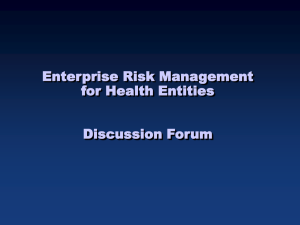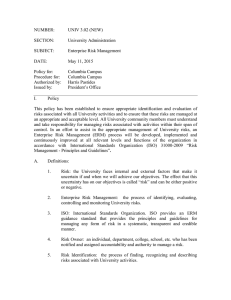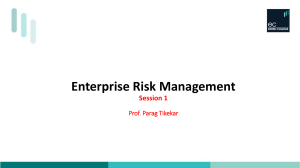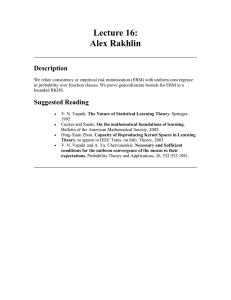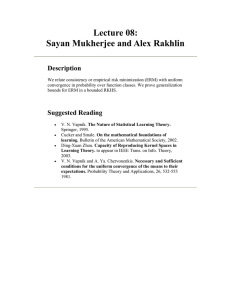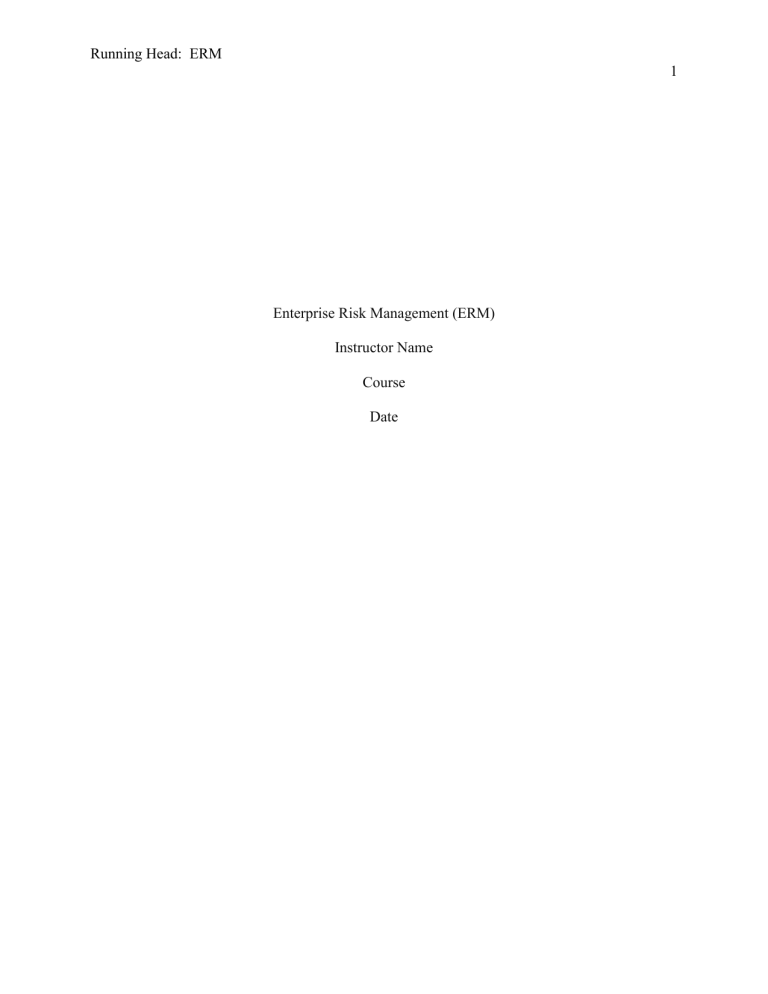
Running Head: ERM 1 Enterprise Risk Management (ERM) Instructor Name Course Date ERM 2 Enterprise Risk Management (ERM) 1. Discuss the events leading to the development of the concept of enterprise risk management. Was the growth of ERM prompted primarily by an expansion of risk management activities within corporations or was it forced upon firms by external events? The current economic crisis features the deplorable outcomes when risks related with techniques and strategies are disregarded or ineffectively managed. coming out from the emergency or a crisis is a significant calls for improvement within the organization. Nevertheless, strategic planning is ideal for monitoring monetary emergiencies in that it overlook deeply into small and large risks oversight with a specific accentuation on key risk management. An enterprise risk management (ERM) is a strategic business approach for identifying, planning, organizing, leading, and controlling activities in an organization to ensure that it prepares for potential uncertainty that can disrupt if the risk occurs during organizational operations (Majdalawieh & Gammack, 2015). Some of the factors considered in an ERM include the people, regulations, and equipment/tools. Therefore, an individual can define ERM as a framework that determines the responsibility of each individual, establishes repeatable principles, and determines the type of tool for mitigating the risks. One of the significant challenges in ensuring that risk management is adding value is to incorporate ERM in business and strategic planning of organizations (Kerstin et al., 2014). The "silos" that separate risk management capacities in an organization likewise make boundaries that separate strategic planning from ERM. In many cases, risk management exercises are not ERM 3 connected or incorporated with key strategies, and premeditated risks can be disregarded, making hazardous "blind spots" in strategy execution and risk management that can be cataclysmic. The challenge, just as happenstance, for associations, is to embed risk thinking and risk management expressly into strategy development and system execution cycles of the organization so as to ensure that strategical methodology and risk outlooks are very much the same (Fraser and Simkins, 2016). ERM 4 References Fraser, J. R., & Simkins, B. J. (2016). The challenges of and solutions for implementing enterprise risk management. Business Horizons, 59(6), 689-698. Kerstin, D., Simone, O., & Nicole, Z. (2014). Challenges in implementing enterprise risk management. ACRN Journal of Finance and Risk Perspectives, 3(3), 1-14. Majdalawieh, M., & Gammack, J. (2015). An Integrated Approach to Enterprise Risk: Building a Multidimensional Risk Management Strategy for the Enterprise.
